Building a profile: The sway of marketing on architectural design
Patrick Sherwood writes on the influence of slick marketing on the architecture industry, and its impact on architecture.
Was it worth Zaha Hadid Architects paying more than $16 million USD to the eponymous architect’s estate to continue to use her name? Duo Dickinson’s article argues that while names in-themselves are valuable, or at least perceived to be for the company’s brand, this reduction to a persona as a “vehicle for promotion, rather than the process and its results,”1 can trivialise architecture to a simple branding exercise.
Naming is an important part of branding strategy. From firms, places and marketing campaigns to buildings, it provides a unique opportunity to state the intent or importance of a project, and to build a compelling design language around which the whole delivery of it is oriented.
In recent years, there seems to have been a trend in the New Zealand market for the extension of naming beyond traditional titling of large-scale public, cultural or commercial institutions, into the realm of branded everyday living. Now, medium-density or mixed-use projects are given memorable names and branding that reflect the unique lifestyle offerings of the development. A co-living facility might be named ‘The Collective’, while a car-free masterplan might be named ‘The Greenway’. In fact, these names often become so important, they become used internally by the architects themselves.
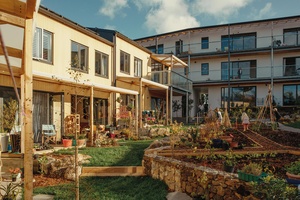
Subdivisions for a long time have employed these tactics. This marketing of residential buildings has become a central aspect of the architecture and real estate industry, as developers look for ways to stand out in a competitive market.
Yet, as the market has shifted away (or at least, diversified from) single-use greenfield developments, we see this same strategy applied to mid-rise, densified neighbourhoods. Exemplified by recently published projects such as CoHaus or 26 Aroha,2 we can see a strong market pressure towards messaging around lifestyle and community, as well as sustainable and energy-efficient practices.3
“…design decisions are limited to whatever aesthetic trend is deemed most valuable.”
-Tessa Forde, in ‘Decorators for finance capital’.
For a number of years, developers such as Ockham have succeeded by building spectacle with bold, out-of-the-box aesthetics of bright colours or textured façades that stand out in their context on prominent sites.4 These successes perhaps belie a growing consumer desire for alternative housing models that more accurately reflect their own personal values. Densified, transit-oriented and walkable neighbourhoods are certainly wanted. As is architecture that respects and improves its context.
But, more strongly, this trend suggests itself as a profitable strategy for developers. As Tessa Forde recently commented: “design decisions are limited to whatever aesthetic trend is deemed most valuable.”5 Fancy aesthetics and rhetoric may simply be a way to inflate the price.
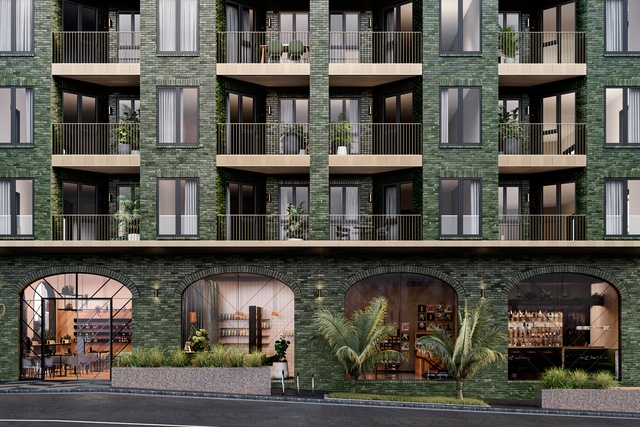
This change, as proposed in new book You and Your Profile: Identity After Authenticity by Moeller and D’Ambrosio,6 is what they call the age of ‘profilicity’. They argue that, in less than 20 years, we have shifted into a time where individuals and organisations are increasingly presenting curated images of themselves to the world, both online and offline, and that these curated images have become the primary elements of their identity.
“…in less than 20 years, we have shifted into a time where individuals and organisations are increasingly presenting curated images of themselves to the world, both online and offline, and that these curated images have become the primary elements of their identity.”
Before the modern era, our identity was defined by social role: your family, your village, your fealty; and to fully embrace this meant committing and believing in the social hierarchy of relations. The 20th century saw a new conception of ‘authenticity’ predominate. This mode treats the individual as having an inner-self that is layered within, and the process of unmasking and shedding toward this hidden truth, ‘finding oneself’, is called being authentic.

Now, however, in the 21st century, rather than some innate hidden or authentic self within, Moeller and D’Ambrosio argue, our identity consists of the various images of ourselves that we present to the world.
We all have experience in presenting different selves to our LinkedIn account versus our Instagram or Twitter profile, having perhaps a private and public account for each. Our persona in the workplace is probably different from that when with friends or family. Because, as Yu describes in her review of the book, “contemporary identity is concerned less with roles and masks; it takes as its archetype the ‘profile’, that public representation of ourselves that is searchable online, time-consuming to craft, and addressed differently to different audiences.”7
“Now, however in the 21st century, rather than some innate hidden or authentic self within, Moeller and D’Ambrosio argue, our identity consists of the various images of ourselves that we present to the world.”
Everybody involved in these developments: contractors, developers, architects, engineers, buyers, are all using the project in this profilitic way: as an expression and extension of their own personal brand. It seems inevitable when buildings — and homes in particular — are “an indispensable pillar of the current economic system”8 that they also become integral to the identities of the parties’ involved.
The business side is perhaps obvious. Each trade uses the project as an addition to their portfolio, a proven track record for future opportunities. There is little legal responsibility for them beyond making money.
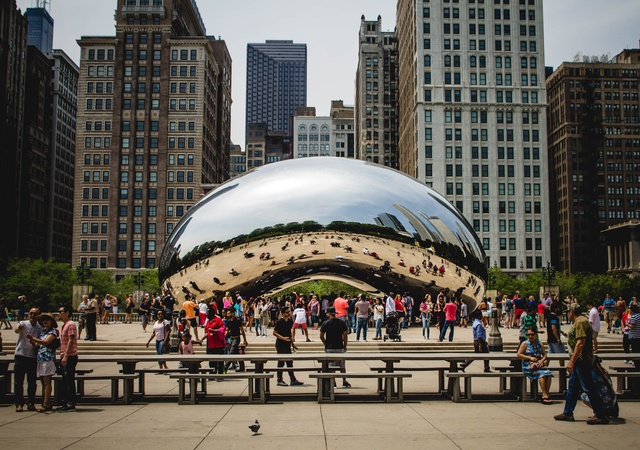
But, more interestingly, if we analyse the buyer’s behaviour as motivated by this same reflexive relationship, what benefit beyond the capital gains do they get from buying this particular property? Is it also about finding a good Zoom background, zip code, or development that reflects their lifestyle and ideals? What does this property say about them? How does it fit into their personal branding strategy?
“The question then, is what is the place for architects in this new system? Are they there simply to lend their name (along with the design, of course) to the signage boards?”
Moeller and D’Ambrosio do not propose any specific solutions to the problems this new world creates. For them, this is the reality of our situation, architecture cannot escape any more than other disciplines can.
The question, then, is what is the place for architects in this new system? Are they there simply to lend their name (along with the design, of course) to the signage boards? Go on many architect’s websites and you won’t see any mention of these lower-spec projects. Only the award-winning designs for richer clients are promoted. Or, if other projects are promoted, it’ll often be community-focused, maybe with matauranga Māori, something that shows how moral the architects are. Sandwiched between more holiday homes.
And, yet, in developer’s marketing material, they proudly proclaim “designed by award-winning architects”. Such is the cost of winning business, I suppose. This is not to undermine the actual design that goes into these projects, but it is curious how architects choose to associate themselves.
“By attaching strong language to the design process, concepts can be carried through to completion and communicated effectively. However, only if the name is a genuine part of the process and not a tagline tacked on for luxury marketing”
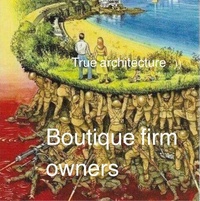
? It can, if recognised, be a useful and fruitful strategy in the service of architecture. By attaching strong language to the design process, concepts can be carried through to completion and communicated effectively. However, only if the name is a genuine part of the process and not a tagline tacked on for luxury marketing.
Much media coverage falls victim to this propaganda, focusing on sexy renders and expensive vistas, often uncritically repeating the branding as fact, without investigating its correspondence to reality.
It need not be only for those who can afford it. In the 1960s, one-third of all houses being built were in the lower quartile of dollar value. Now, that figure is sitting around 5%.9 Why not apply these same branding strategies to social or affordable housing? Why does the lower end of the market get very little publicity in the first place?
“… only those developments which actually change typical ownership structures, thereby disrupting financial accumulation and commodification, should be praised. All the rest need to be called out for what they are: spin.”
To start, let’s first embrace the manufactured nature of marketing and be transparent about the process of creating and presenting curated images. Architects have a responsibility to engage the public about the value of good design and their role as not simply decorators but as advocates for experience and sustainability and amenity. Not just servicing capital, but contributing to the community.
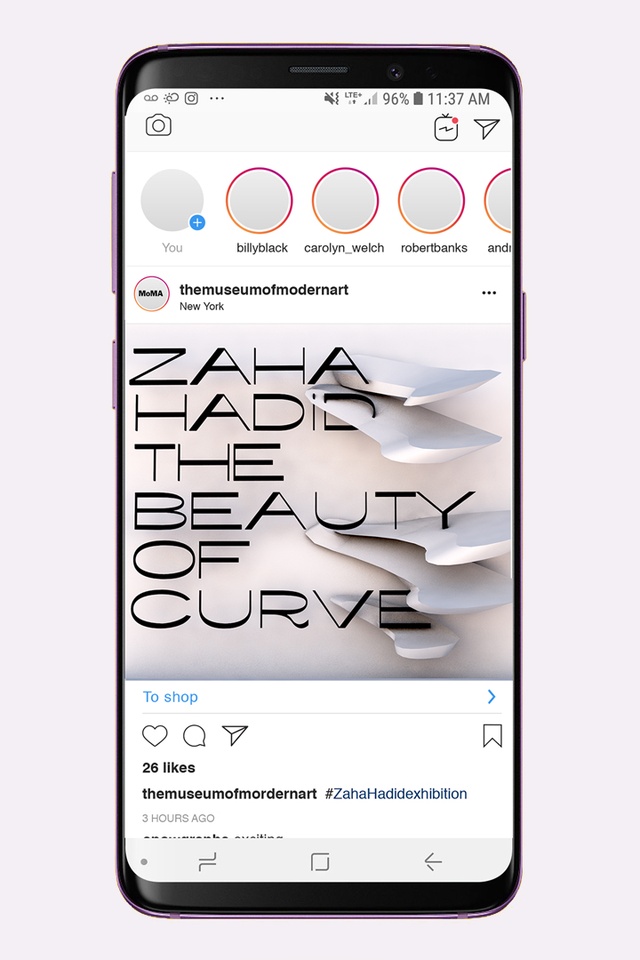
Secondly, only those developments which actually change typical ownership structures, thereby disrupting financial accumulation and commodification should be praised. All the rest need to be called out for what they are: spin.
Moeller and D’Ambrosio’s world might find Dickinson’s architect to be archaic or idealistic, forgoing self-promotion and fiduciary efficiency in service of the design process. An architect is not judged solely on the final built product. Doing good work, as they say, may not be enough. Would Zaha have been able to produce such impressive work if not for her mastery of self-promotion?
However, Dickinson’s sentiment is hard to disagree with. “Designers effectively bestow their gifts on everyone, because their designs can be used by anyone, and live on after architects are no longer part of their building’s reality.”
References
1 ‘Branding Is Not Architecture’, Duo Dickinson. Common Edge. 1st January 2022. https://commonedge.org/branding-is-not-architecture/
2 ‘Lyttelton Harbour Light Apartments’ by Ignite https://www.stuff.co.nz/business/130192650/historic-Lyttelton-theatre-site-set-to-come-alive-as-communal-living-space; ‘Peterborough Housing Collective’ http://www.peterborough.nz/
3 ‘Ever wondered what sustainable urban living could look like?’ by Urban Collective. https://wonderapartments.nz/; Kauri Residences by Aedifice Property Group. https://kauriresidences.co.nz/
4 ‘The Greenhouse taking form’ ArchitectureNow editorial desk. https://architecturenow.co.nz/articles/the-greenhouse-taking-form
5 ‘Decorators for Finance Capital’, Tessa Forde. https://architecturenow.co.nz/articles/decorators-for-finance-capital/
6 You and Your Profile: Identity After Authenticity, Hans-Georg Moeller and Paul J. D’Ambrosio, Columbia University Press, 2021
7 ‘Identity in Three Acts’, Gloria B. Yu, LA Review of Books, March 13, 2022
8 Reinier de Graaf, Four Walls and a Roof (Cambridge, Massachusetts: Harvard University Press, 2017)
9 ‘House Talk, Episode 1 - Housing Stress’ RNZ. 9th November 2020. https://www.youtube.com/watch?v=cSf98-2J4pE










